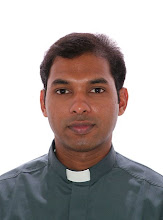
“
Isa vasya midam sarvam Yatkinja jagatyam jagat”(Upanishad)
This world is full of God, and in everything there is God.
In a nut shell we can say this is what the Indian culture is and shows and the Indian philosophy teaches.
Every ancient culture has to tell a story of a river from where it has got the power and resources to grow up and to become one among the great and rich cultures in the world. The Indian culture too has to tell a story of the river Indus. The name India is derived from Indus, which is derived from the Old Persian word Hindu, from Sanskrit Sindhu, the historic local appellation for the Indus .
The Indian culture starts from the Indus valley civilization. Indian culture is both ancient and diverse and stretches back in an unbroken sweep over 5000 years. India's culture is marked by a high degree of syncretism and cultural pluralism. It has been shaped by the long history of India, its unique geography and the absorption of customs, traditions and ideas from both immigrants and invaders, while preserving its ancient heritage from the Indus Valley Civilization. India's great diversity of cultural practices, languages, customs, and traditions are examples of this unique co-mingling over the past five millennium. India is also the birth place of several religious systems such as Hinduism, Jainism, Buddhism, and Sikhism, which have had a great influence not only over India but also over the rest of the world. From the twelfth century onwards, following the Islamic conquests and the subsequent European occupation, the culture of India was influenced by Persian, Arabic, Turkish and English cultures. Indian architecture is one area that represents the diversity of Indian culture. Much of it, including notable monuments such as the Taj Mahal and other examples of Mughal architecture and South Indian architecture, comprises a blend of ancient and varied local traditions from several parts of the country and abroad. Vernacular architecture also displays notable regional variation.
Indian music covers a wide range of traditions and regional styles. Classical music is split mainly between the North Indian Hindustani and South Indian Carnatic traditions. Indian dance too has diverse folk and classical forms. Among the well-known folk dances are the bhangra of the Punjab, the bihu of Assam, the chhau of Bihar and Orissa and the ghoomar of Rajasthan. Eight dance forms, many with narrative forms and mythological elements, have been accorded classical dance status by India's National Academy of Music, Dance, and Drama. These are: bharatanatyam of the state of Tamil Nadu, kathak of Uttar Pradesh, kathakali and mohiniyattam of Kerala, kuchipudi of Andhra Pradesh, manipuri of Manipur, odissi of the state of Orissa and the sattriya of Assam.The earliest works of Indian literature were transmitted orally and only later written down. These included works of Sanskrit literature – such as the early Vedas, the epics Mahābhārata and Ramayana.
Traditional Indian dress varies across the regions in its colours and styles and depends on various factors, including climate. Popular styles of dress include draped garments such as sari for women and dhoti or lungi for men; in addition, stitched clothes such as salwar kameez for women and kurta-pyjama and European-style trousers and shirts for men, are also popular.
Many Indian festivals are religious in origin, although several are celebrated irrespective of caste and creed. Some popular festivals are Diwali, Thai Pongal, Holi, Onam, Vijayadashami, Durga Puja, Eid ul-Fitr, Bakr-Id, Christmas. Religious practices are an integral part of everyday life and are a very public affair.
Like the different colors make the rainbow so beautiful, the difference verities in Indian culture shows always its beauty and keep its dignity with all other ancient cultures in this modern world.
 October 12th was the day that the endless of flowers fallen upon the millions of people in India, especially, Kerala where Alphonsa was born. Because she has got the first woman saint in the more or less 1900 years history of Christians in kerala. In front of more or less 50000 people (among them 25000 people of inidan origin) who gathered together in st. peter’s square, Sr. Alphonsa became Saint Alphonsa after she was canonized by Pope Benedict XVI during the ceremony at St. Peter’s square.
October 12th was the day that the endless of flowers fallen upon the millions of people in India, especially, Kerala where Alphonsa was born. Because she has got the first woman saint in the more or less 1900 years history of Christians in kerala. In front of more or less 50000 people (among them 25000 people of inidan origin) who gathered together in st. peter’s square, Sr. Alphonsa became Saint Alphonsa after she was canonized by Pope Benedict XVI during the ceremony at St. Peter’s square.


